Chifrijo is a very popular dish in Costa Rica. A bed of rice forms the base of the dish which is then piled high with red kidney beans, chicharrón, pico de gallo, and avocado. Eat it as is or use tortilla chips to scoop it up! This delicious Costa Rican bar food will fill you up quickly!
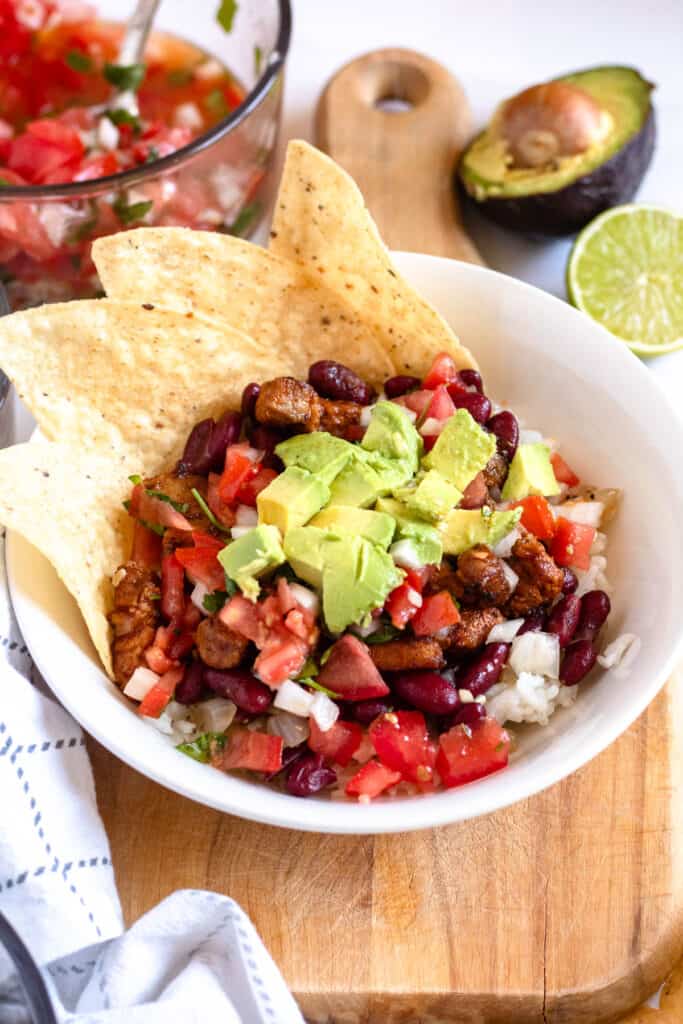
“Hello Reader! I try my hardest to research recipes as best as I can before posting to ensure I am representing each culture correctly. If this recipe is from your country and I have made a mistake or you have suggestions for how to make it more authentic, I would love to hear! Please leave a comment below letting me know what should be different, and I will rework the recipe. It is always my intention to pay homage and respect to each cultural dish that I cook. Thanks for reading!”
Eating while traveling is always an adventure. Sometimes it’s exciting to go out to a fancy restaurant and order the most impressive thing off the menu (like Creme Brulee!). But oftentimes, the best meals you can get while traveling are the hole-in-a-wall type of dinners that show you the real heart of the country (like this Pollo con Tajadas from Honduras or Elote Loco from El Salvador).
That is what Chifrijo is in Costa Rica. This well-loved and filling dish from Costa Rica is made using white rice, pork belly, red beans, pico de gallo, and avocado. It is usually scooped up using tortilla chips for a hearty and delicious meal!
You won’t find Chifrijo on a fancy restaurant menu, but the entire country loves it. And because they love it, we tried it and now I love it, too! Keep reading for all of the instructions you need to make this dish perfectly.
Recipe Origins
The Chifrijo Recipe only came about as a Costa Rican staple in the 1990s when it was invented in Cordero’s Bar in San José, the capital of Costa Rica. The owner of the bar, Miguel Ángel Cordero Araya, was hungry one day and scooped up the dish’s main ingredients into one bowl. He served it to the bar chef as well as a patron and both loved it as well. From there, the meal quickly took off!
Though most Chifrijo recipes use rice and avocado these days, Araya’s original meal did not include them. Instead, it was a bowl of beans, chicharrón, and Costa Rican chimichurri! You can watch an interview with Araya describing that day here.
This Chifrijo Recipe is now served frequently in the form of street food in Costa Rica, but you can also order it in bars or restaurants. It’s pretty cheap to buy as street food, costing usually around $3-10 USD. In restaurants, of course, you can expect the price of the dish to increase.
What Do I Need to Make this Recipe?
Ingredients
Here is a visual overview of the ingredients in the recipe. Scroll down to the recipe at the bottom for quantities.

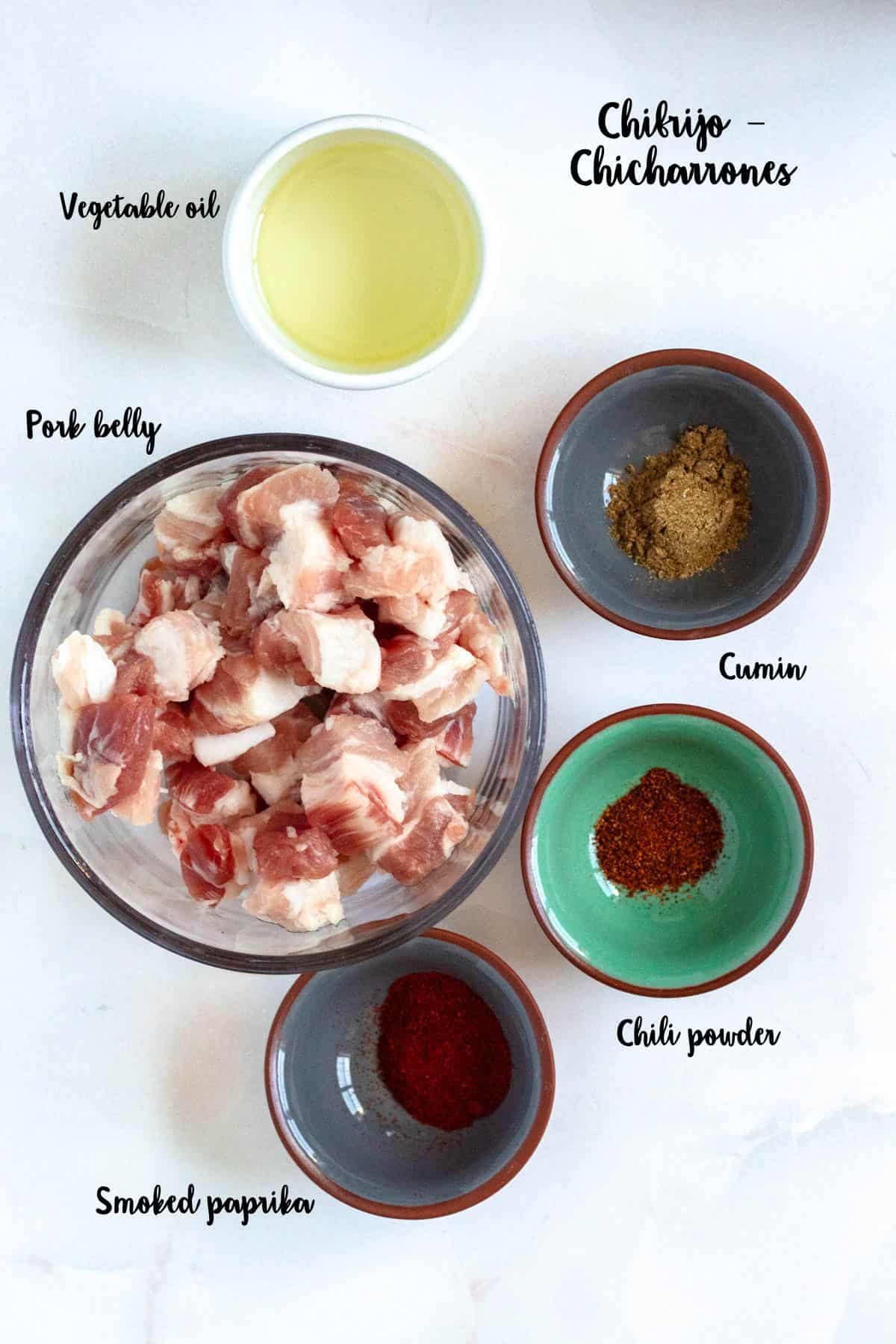
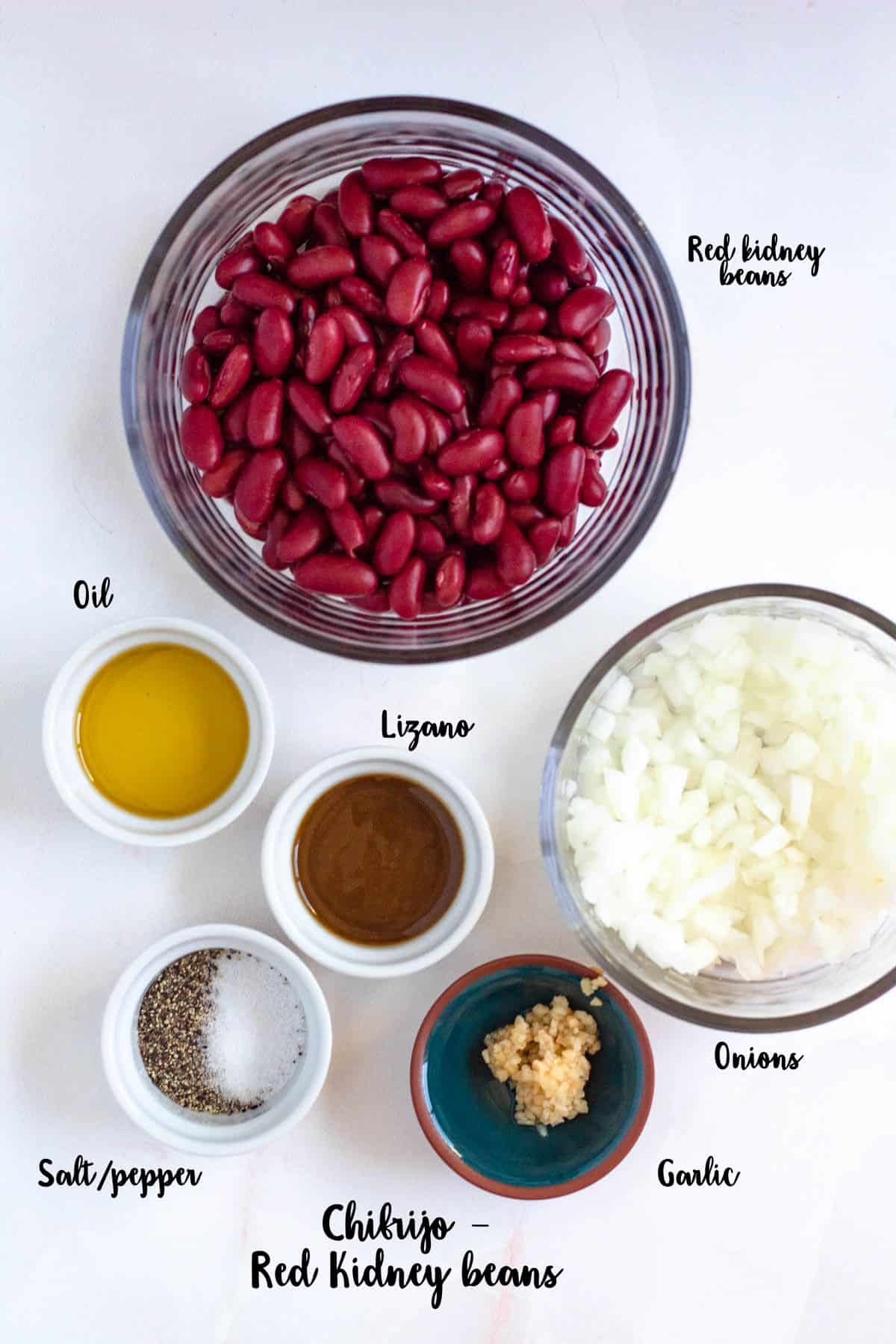
- Beans: Most Costa Rican recipes for Chifrijo call for Cubace beans, but in America Red Kidney Beans are a good substitute. Most people soak the beans overnight and then boil them and cook the next day. This is the most traditional method, but in an attempt to make this dish more approachable, I chose to doctor up some canned red beans. Feel free to soak and boil dried red beans if you prefer. You can substitute black beans in a pinch, but I recommend red beans for a more authentic flavor.
- Salsa Lizano: This is a popular condiment in Costa Rican restaurants and kitchens. See the “The Importance of Lizano” section for substitutions if desired.
- Pork Belly: Not all Chifrijo Recipes call for adding seasoning to the fried pork, but I think it adds some great flavor and highly recommend it. The flavor and texture of pork belly is really important in this recipe! I don’t recommend substituting it, but if you need to, here is a list of 10 Pork Belly Substitutions that could work in a pinch. Some people substitute packaged pork rinds instead of pork belly, but I do not recommend this substitution.
- Long Grain White Rice: This forms the base of the dish. It’s great to use leftover white rice if you have it to make assembly of this dish even easier! If not, you can use these instructions on How to Cook Long Grain White Rice in the Instant Pot for instructions on how to cook your rice quickly and easily. Feel free to substitute Brown Rice for a healthier option.
- Avocado: The avocado adds so much creaminess to this Chifrijo recipe! It is a great ingredient that pulls the whole thing together, so don’t leave it out.
Tools
- Mixing Bowls
- Pots
- Cast Iron Skillet
- Wooden Spoon
- Tongs
What are Chicharrones?
Chicharrones are a really popular snack food in Costa Rica (and other countries in Central America and South America, like Colombia, where they eat Chicharrones in Bandeja Paisa).
Chicharrones are made with pork belly. In Costa Rica, the pork belly is cut into cubes and then fried. You can coat them in spices before frying (in this case, smoked paprika, cumin, and chili powder) to give them even more flavor.
Pork belly is just uncured, unsliced bacon, which means that making chicharrones means that you’re just frying up thick cubes of bacon for crunching! Hey, that sounds pretty good to me 😉
Ticos (people from Costa Rica) love chicharrón and eat it across the country. Though chiccarrón is mixed into this dish, quite often it’s bought alone and eaten as a solo snack. Costa Ricans often cook it up in accompaniment with a celebration, like a birthday or a festival! The city of Puriscal in Costa Rica even hosts a Feria del Chicharrón (Chicharrón Festival) every year. It’s all part of the pura vida (pure life) of the country.
If you love pork belly, you might also love Stegt Flaesk from Denmark, which bakes up thin strips of pork belly as a main course!
The Importance of Lizano
Salsa Lizano, the most common condiment used in Costa Rica, makes a special appearance in our recipe for Gallo Pinto! Lizano is a smoky, tangy dressing that I could liken to Worcestershire sauce.
The difference between Worcestershire Sauce and Lizano is the smokiness-factor present in Lizano. It gives the entire dish a different flavor.
Lizano can be found in most South American grocery stores if you can find one. If not, you can also order it off of Amazon! If you either can’t afford that or need a quick substitute, you can use Worcestershire sauce and add a little cumin as well. This will be the best replacement!
How to Make this Recipe
Step One: Make the Pico de Gallo
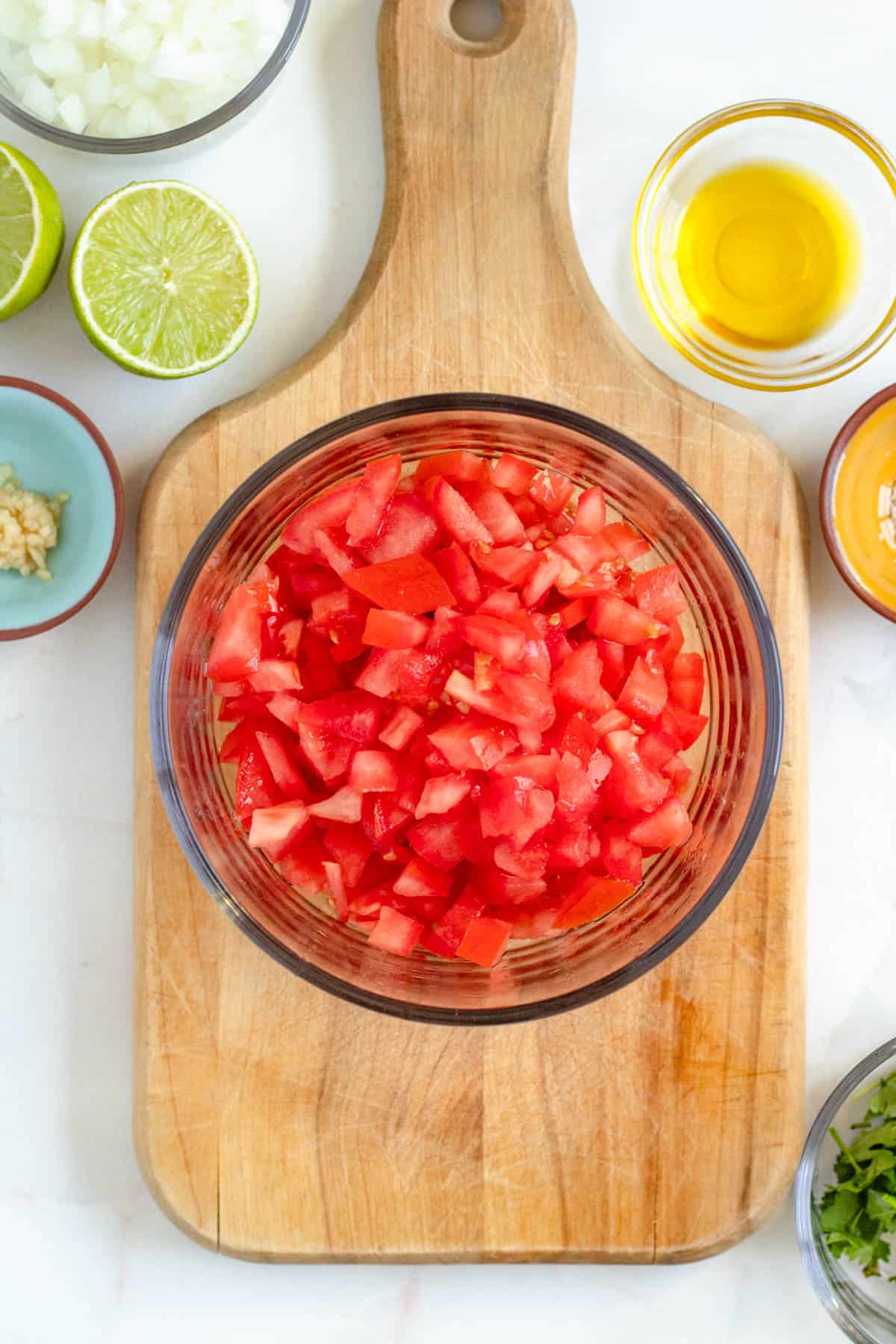
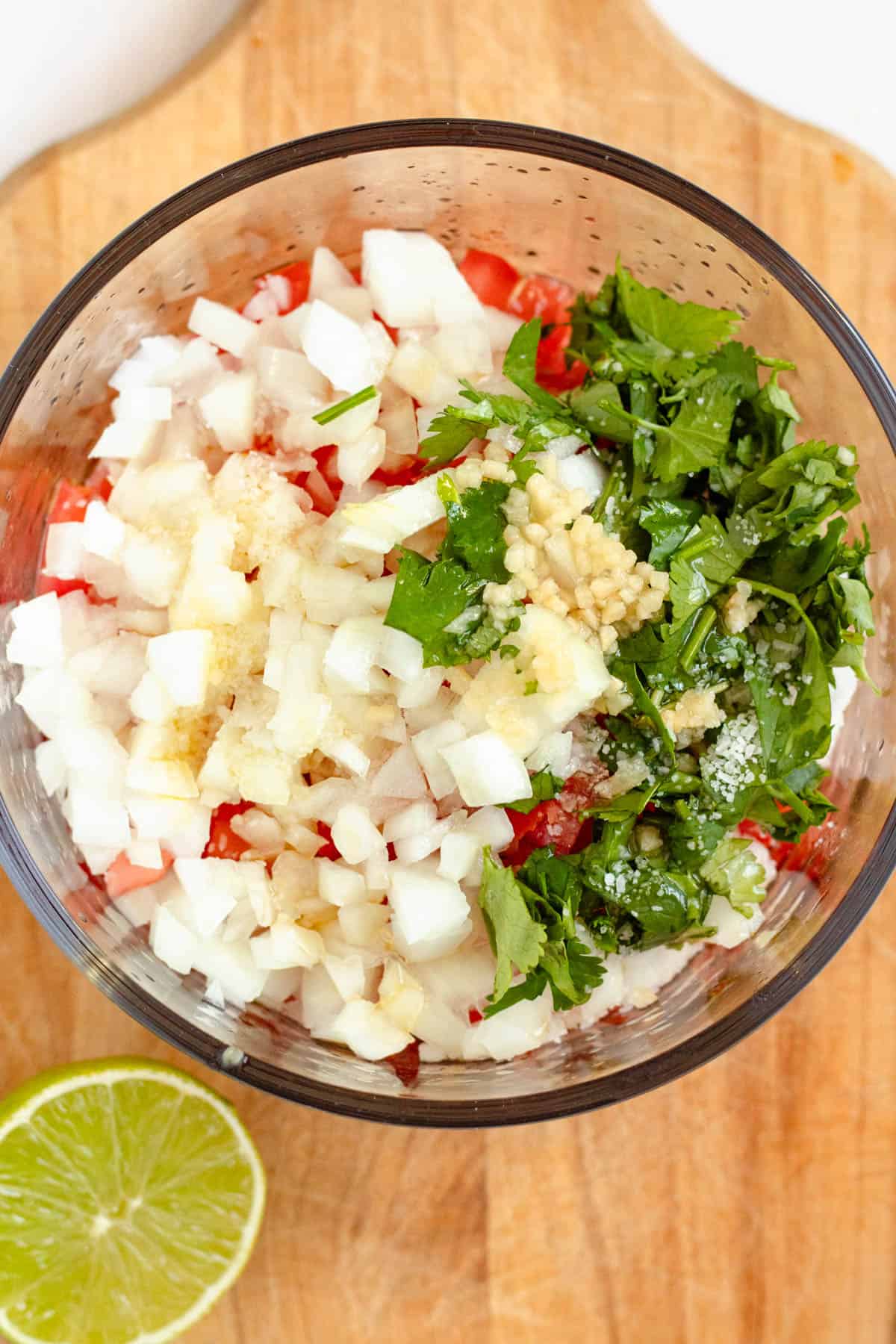
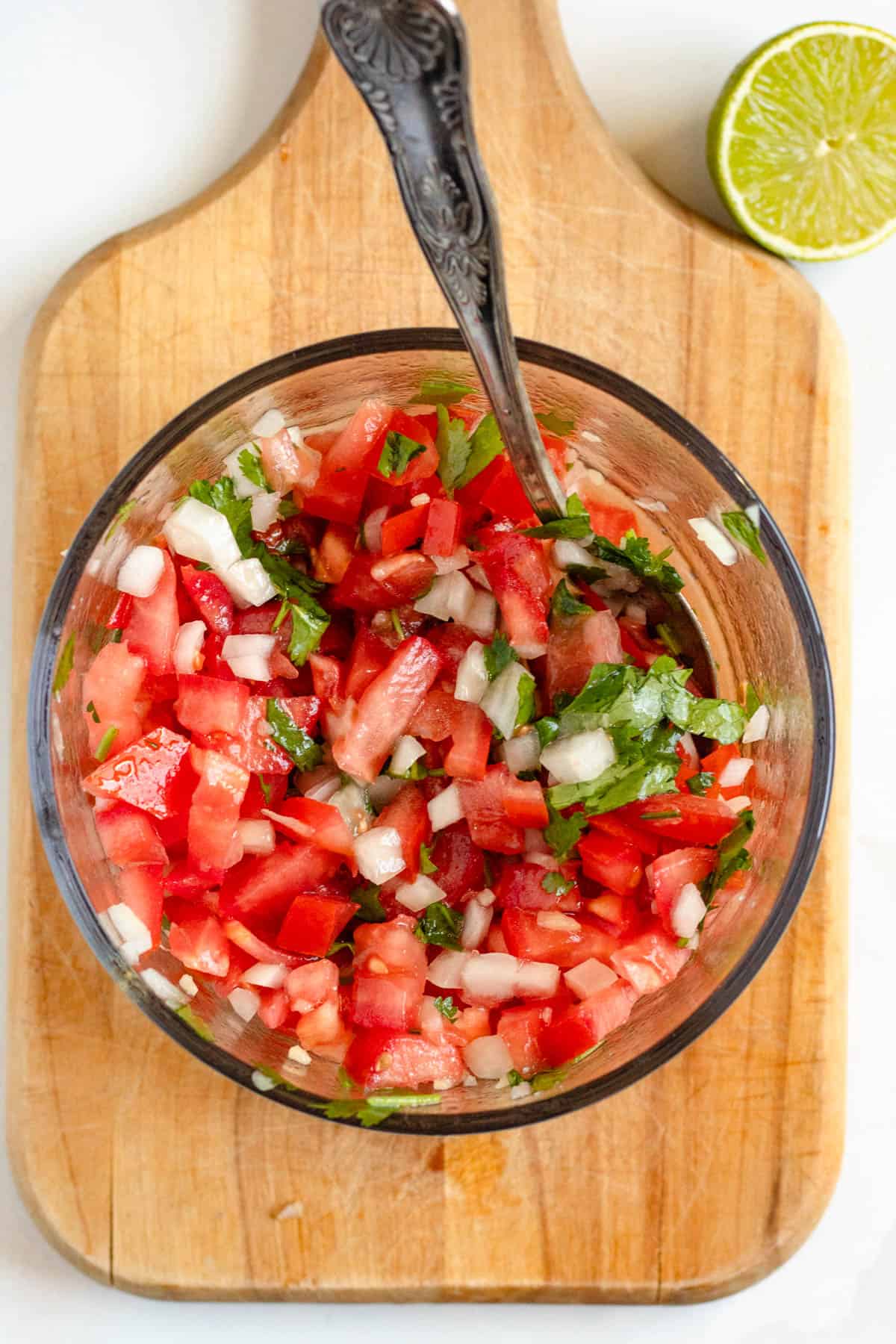
Combine all pico de gallo ingredients and allow to sit for half an hour.
Step Two: Make Red Beans

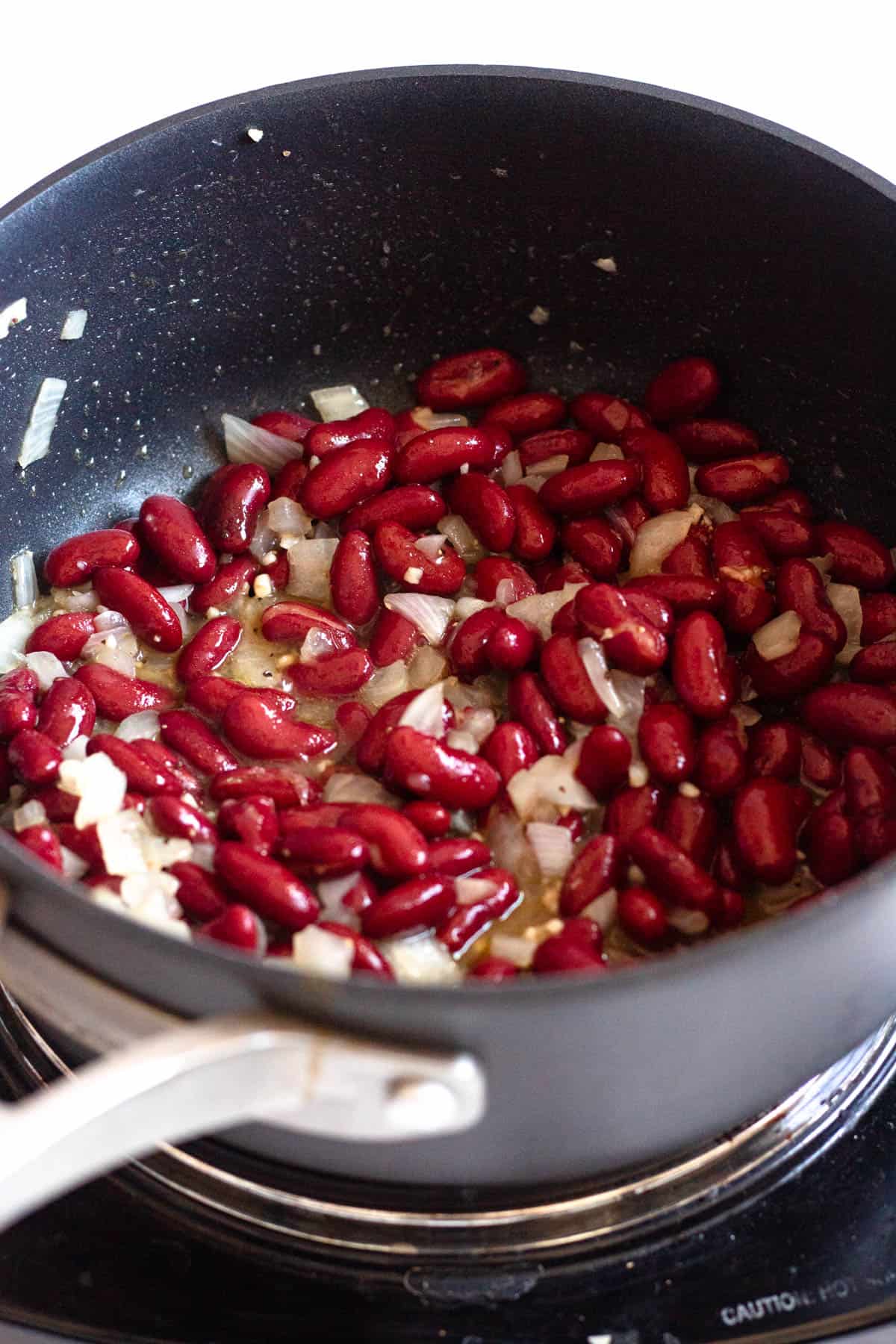
Drain and rinse your red kidney beans.
In a medium pot, heat the oil over medium heat. Add the onions and saute for about 5 minutes until they turn translucent.
Add the kidney beans to the pot. Add the garlic, salt, pepper, and Lizano (or Worcestershire sauce).
Stir until warm. Remove and set aside.
Step Three: Make the Chicharrón
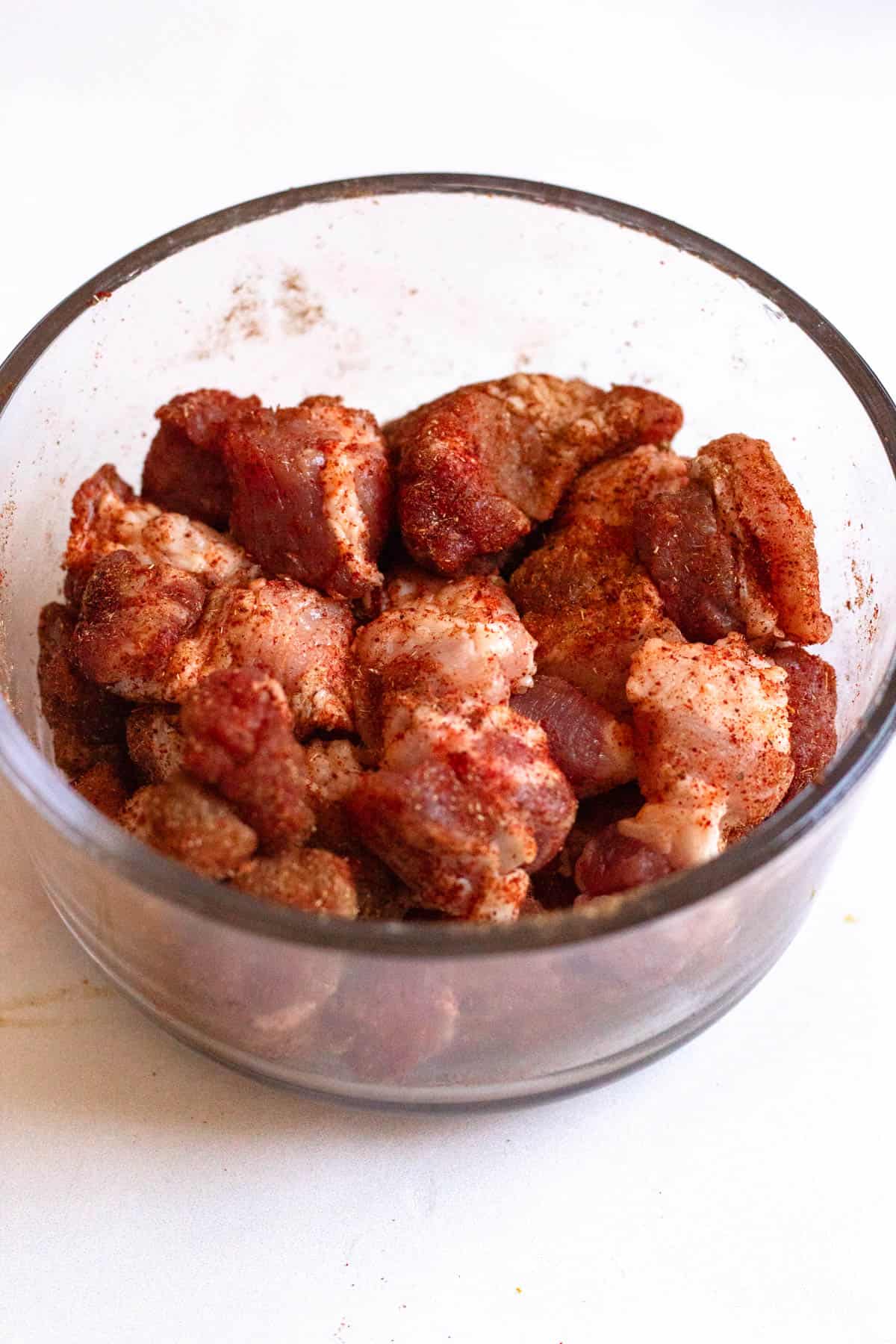
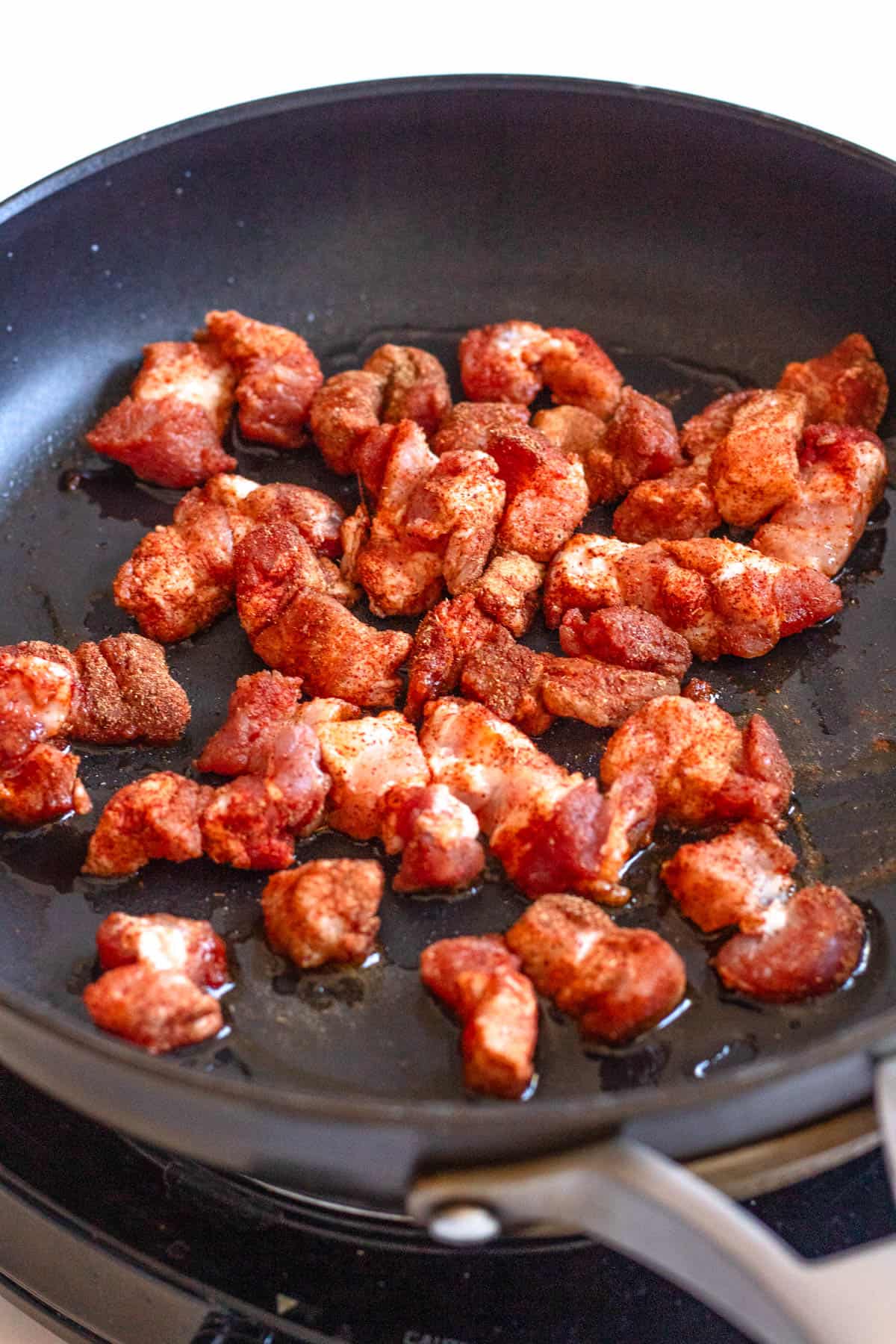
In a small bowl, combine the uncooked, cubed pork belly with all of the spices. Mix until all pieces are fully coated.
In a medium cast iron skillet, heat the oil on medium-high heat. Once heated, add the pork belly. Stir to cook, about 10 minutes. Chicharrones should be slightly crispy.
When cooked, remove from the pan and leave to rest on a plate lined with paper towels
Step Four: Assemble
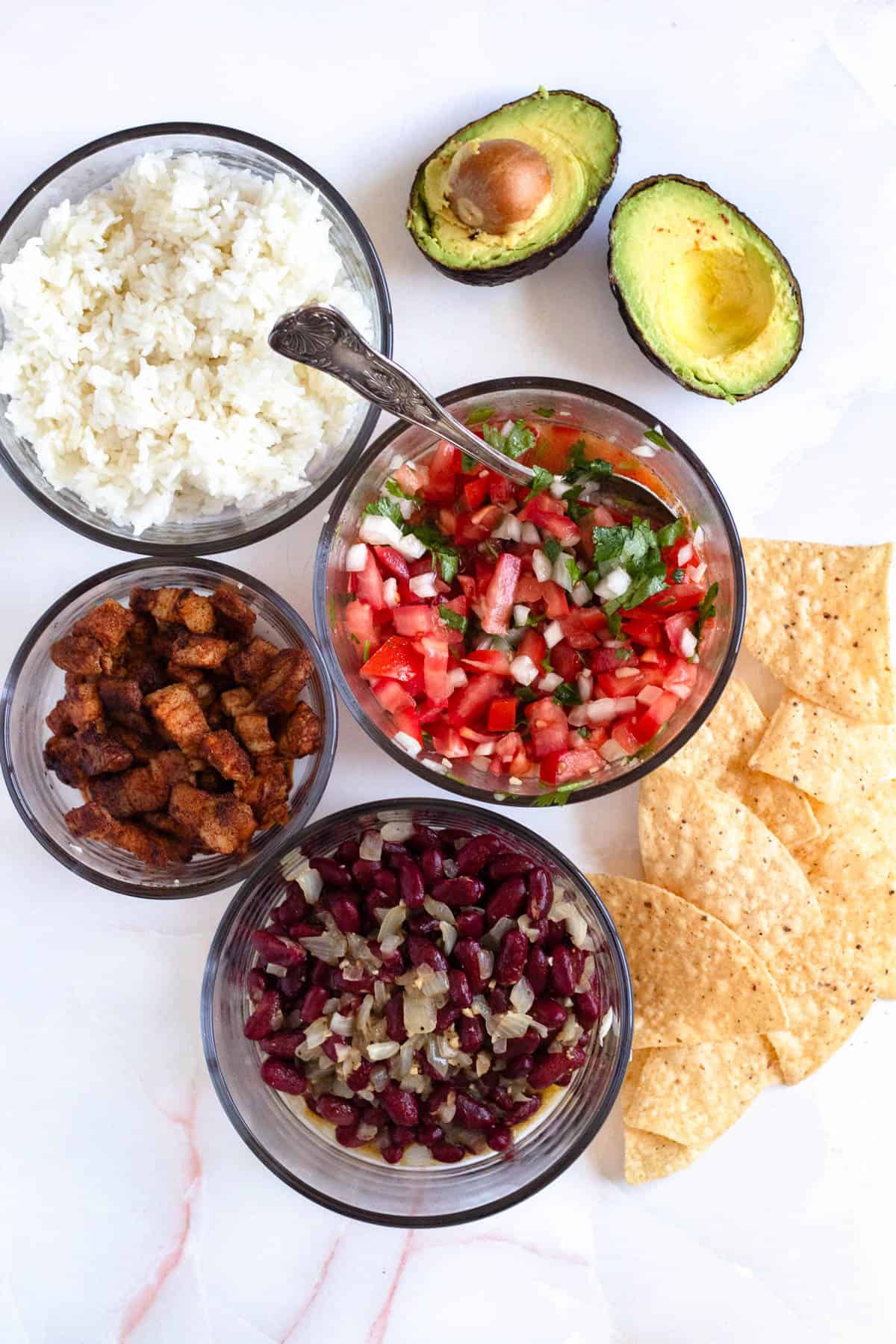
Assemble the bowl with rice on the bottom, then beans, then chicharrones, the Pico de Gallo, and the avocado on top. Serve with tortilla chips for extra deliciousness. Then pick up a Suspiro or two to get that sweetness you crave in without being overdoing it. These simple treats are a cross between a cookie and candy.
Expert Tips
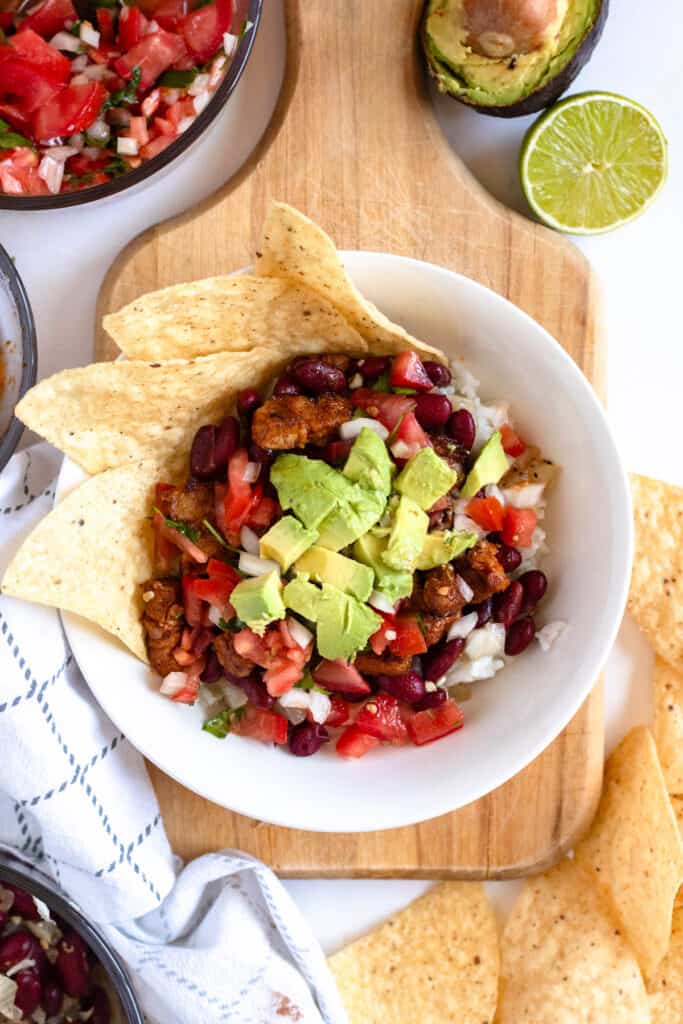
- Chifrijo is easiest to make when you already have rice and beans left over from the day before! Gallo Pinto is another great Costa Rican dish to make with leftover rice.
- Ticos will sometimes call the Pico de Gallo “chimichurri”, though it’s not to be confused with Argentinian Chimichurri or Red Chimichurri, which is a thin parsley sauce often served with steak!
- Vegetarians and vegans can easily enjoy this recipe if it is prepared without the chicharrones.
- Add hot sauce for a spicy variation of Chifrijo! Or a squeeze of fresh lime juice for a citrusy touch.
- If you want to get crazy you can make homemade tortilla chips by frying up corn tortillas.
- Serve Chifrijo in a large soup bowl to have the most depth and width to enjoy the dish!
Other Ways to Cook Your Pork Belly
- Bake: You can bake your pork belly if you don’t want to fry it, though frying is a lot quicker. To do so, preheat the oven to 350 degrees Fahrenheit, then coat the pork belly in olive oil and the spices. Place the pork belly on a baking sheet and bake for about 10 minutes on each side.
- Deep Fry: Fill a pot with oil that is deep enough to cover the pork belly. Bring it to 350 degrees Fahrenheit, then carefully drop your pork belly into the oil. This will make for a much crispier chicharrónm but may remove a lot of the seasonings you added.
Recipe FAQs
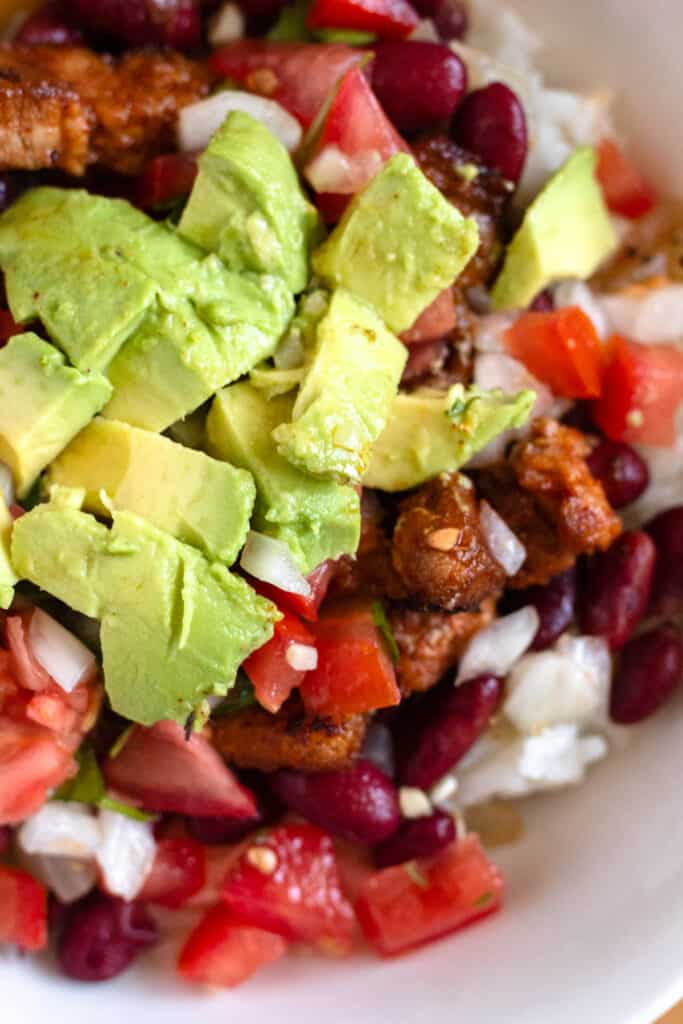
The word Chifrijo is a combination of two of the most important ingredients in the dish: Chicharrón (pork belly) and Frijoles (red beans). Add the two names together and you get Chifrijo!
Chifrijo from Costa Rica is usually eaten as a midday snack or as a late-night bar food! It is also often served as a boca or a hearty Costa Rican appetizer.
This dish is usually served as an appetizer (bocado) or snack in Costa Rica, but we ate it as a main course! Depending on how much you choose to eat, Chifrijo could be quite the hearty dinner.
Chifrijo is usually served with beer, so make sure to crack a good bottle of your favorite brew before eating!
Arroz con Leche or Suspiros as a dessert after enjoying your meal.
Did you enjoy this Chifrijo Recipe from Costa Rica? If so, make sure to check out these other recipes I picked out just for you.
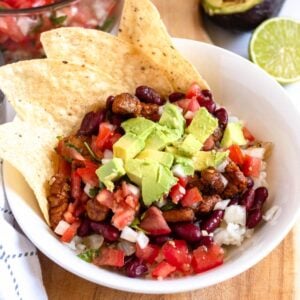
Chifrijo from Costa Rica
Equipment
- Mixing Bowls
- Pots
Ingredients
Pico de Gallo Ingredients
- 2 Roma tomatoes, finely chopped
- ½ cup white onion, finely diced
- 2 tbsp olive oil
- 2 tbsp cilantro, minced
- ½ tsp garlic, minced
- ½ tsp kosher salt
- 1 tbsp fresh lime juice
Red Kidney Bean Ingredients
- 2 Tbsp oil
- 15 oz red kidney beans, 1 can, drained and rinsed
- ½ sweet onion, diced
- 1 tsp garlic
- ¼ tsp salt , to taste
- Fresh Ground Black Pepper to Taste, Use code FF20 for 20% off
- 1 tbsp Lizano , or Worcestershire sauce if you don't have Lizano
Chicharrones Ingredients
- 8 oz pork belly, cut into cubes about 1 inch in diameter
- ½ tsp smoked paprika
- ½ tsp cumin
- ¼ tsp chili powder , or more to taste
- 1 tbsp vegetable oil
Assembly Ingrediens
- 2 cups Long Grain White Rice, cooked (about 1 cup, uncooked)
- 2 Avocados, diced
- Tortilla chips, for serving
Instructions
Pico de Gallo Instructions
- Combine all pico de gallo ingredients together and allow to sit for a half an hour.
How To Make Red Beans Instructions
- Drain and rinse 15 oz red kidney beans.
- In a medium pot, heat the oil over medium-high heat. Add ½ diced onions and saute for about 5 minutes until they turn translucent.
- Add the kidney beans into the pot. Add 1 tsp garlic, ¼ tsp salt, pepper to taste, and 1 tbsp Lizano (or Worcestershire sauce).
- Stir until warm. Remove and set aside.
Chicharrones Instructions
- In a small bowl, combine 8 oz uncooked, cubed pork belly with all of the spices. Mix until all pieces are fully coated.
- In a medium cast iron skillet, heat 1 tbsp oil on medium-high heat. Once heated, add the pork belly. Stir to cook, about 10 minutes. Chicharrones should be slightly crispy.
- When cooked, remove from the pan and leave to rest on a paper towel-lined plate.
Assembly
- Assemble the bowl with rice on the bottom, then beans, then chicharrones, then the Pico de Gallo, the avocado on top. Serve with tortilla chips for extra deliciousness.
Notes
- Beans: Most Costa Rican recipes for Chifrijo call for Cubace beans, but in America Red Kidney Beans are a good substitute. Most people soak the beans overnight and then boil them and cook the next day. This is the most traditional method, but in an attempt to make this dish more approachable, I chose to doctor up some canned red beans. Feel free to soak and boil dried red beans if you prefer. You can substitute black beans in a pinch, but I recommend red beans for a more authentic flavor.
- Salsa Lizano: This is a popular condiment in Costa Rican restaurants and kitchens. See the “The Importance of Lizano” section for substitutions if desired.
- Pork Belly: Not all Chifrijo Recipes call for adding seasoning to the fried pork, but I think it adds some great flavor and highly recommend it. The flavor and texture of pork belly is really important in this recipe! I don’t recommend substituting it, but if you need to, here is a list of 10 Pork Belly Substitutions that could work in a pinch. Some people substitute packaged pork rinds instead of pork belly, but I do not recommend this substitution.
- Long Grain White Rice: This forms the base of the dish. It’s great to use leftover white rice if you have it to make assembly of this dish even easier! If not, you can use these instructions on How to Cook Long Grain White Rice in the Instant Pot for instructions on how to cook your rice quickly and easily. Feel free to substitute Brown Rice for a healthier option.
- Avocado: The avocado adds so much creaminess to this recipe! It is a great ingredient that pulls the whole thing together, so don’t leave it out.
- This dish is easiest to make when you already have rice and beans left over from the day before! Gallo Pinto is another great Costa Rican dish to make with leftover rice.
- Ticos will sometimes call the Pico de Gallo “chimichurri”, though it’s not to be confused with Argentinian Chimichurri or Red Chimichurri, which is a thin parsley sauce often served with steak!
- Vegetarians and vegans can easily enjoy this recipe if it is prepared without the chicharrones.
- Add hot sauce for a spicy variation! Or a squeeze of fresh lime juice for a citrusy touch.
- If you want to get crazy you can make homemade tortilla chips by frying up corn tortillas.
- Serve this in a large soup bowl to have the most depth and width to enjoy the dish!
Nutrition
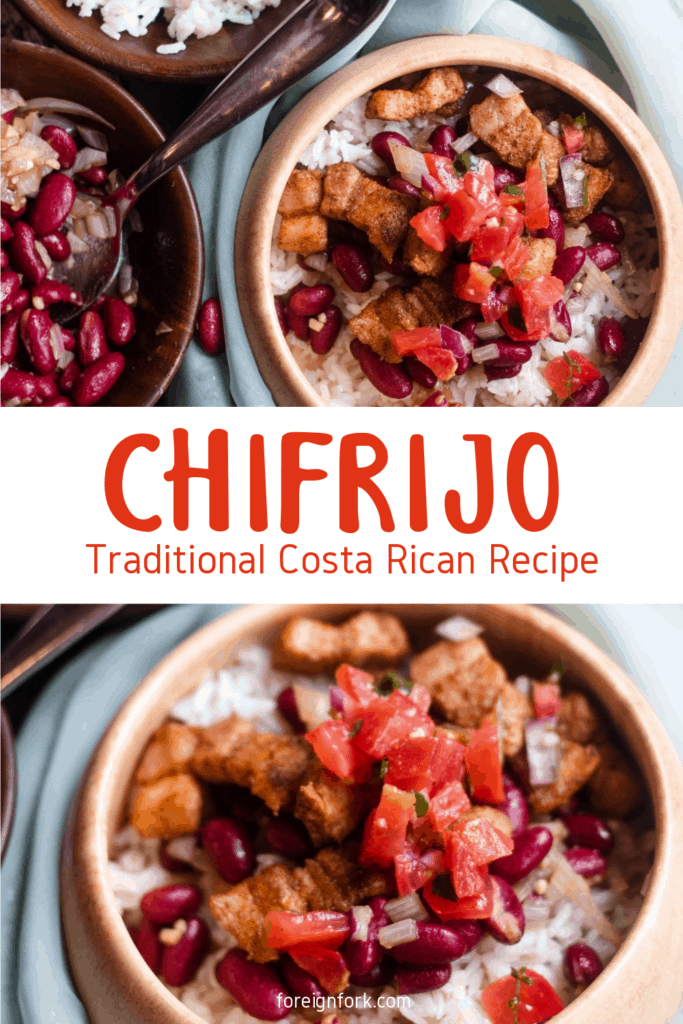


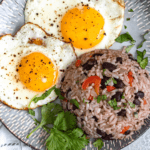

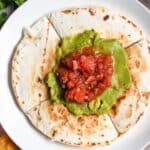
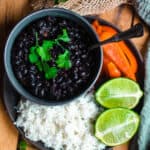
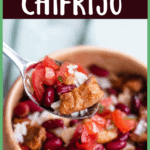
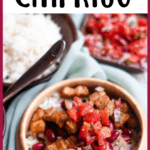
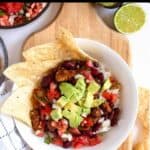
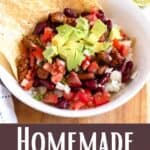
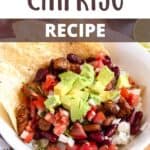

John says
I don’t think you ever ate Chifrijo.
First of all kidney beans are not available in CR. I have seen any for years. They use red beans. You can buy larger red beans but they are not kidney beans.
Yes Costa Ricans love lizano sauce but not really for Chifrijo.
Salsa picante is used. Lizano sauce is used on Gallo pinto.
A bowl costs more than 3$ nowadays. 4-5$ now.
A Costa Rican chicharrone is a deep fried hunk of meat not a pork belly. I have lived in Colombia and there is a big difference.
Also every Chifrijo I have ever eaten comes with tortilla chips inserted along the sides of the bowl. And I have eaten hundreds.
Hope this helps
The Foreign Fork says
Hey John,
You are so right! I’ve never tried Chifrijo before. The concept of my blog is that I’m cooking one meal from every country in the world, so I cook a lot of things I’ve never tried before. I do try to research as much as humanly possible to make sure I get it right but sometimes I still end up making mistakes. I really appreciate when locals/people from that country (who know what they’re doing better than I) reach out with suggestions though! So thank you for all of these suggestions! I will put this recipe on my list of ones to try again 🙂 Have a great day!